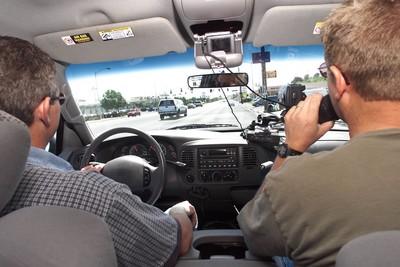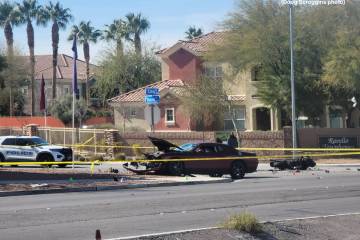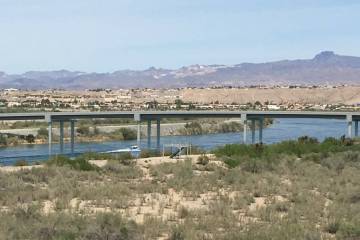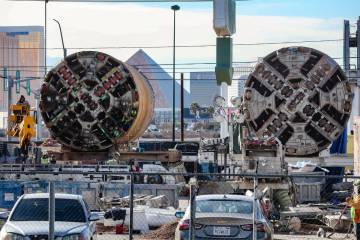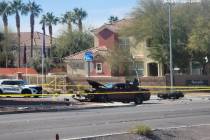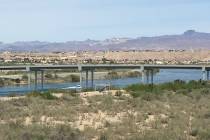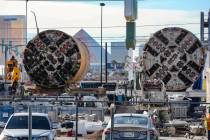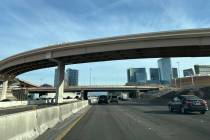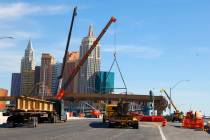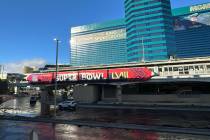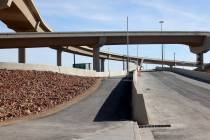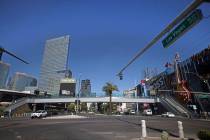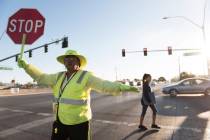Web site tracks ‘speed traps’
Over on Alta Drive between Hualapai Way and Rampart Boulevard, often there are motorcycle cops sitting around with their radar guns, said Driver One.
Yep, I got nailed there once, too, added Driver Two. It's a nice five-lane road that could be posted at 45 mph at least. The cops know that. It's an easy mark for them.
I saw three Metro motorcycle cops recently pulling people over right and left, concluded Driver Three. They sit in the little driveways along Alta.
These could be the gripes of drivers in a Summerlin coffee shop. While the whining is real, the complaining took place in cyberspace.
The Information Superhighway is just the latest place commuters on real highways can share thoughts on where cops like to stop folks. Specifically, a Web site at www.speedtrap.org allows drivers to catalog and comment upon so-called "speed traps."
The site pinpoints cop-controlled hot spots from all over the country, and more than two dozen locales in the Las Vegas Valley are listed so far. Locations drawing driver ire include Hualapai and Sahara Avenue, Valley View Boulevard and Warm Springs Road, and Lake Mead Boulevard and Decatur Boulevard, among others. The site typically gets around 10,000 hits a day from coast to coast, organizers say.
The site is the handiwork of the National Motorists Association, a Wisconsin-based advocacy group that has long advocated against speed limits. On the speed trap site, the association calls most speed limits "grossly underposted and universally ignored."
"It just kind of levels the playing field," Aaron Quinn, an association spokesman, said recently. "It lets you know where the enforcement is."
Quinn believes speed limits should reflect speeds at which most drivers can comfortably drive: specifically, the average pace of 85 percent of drivers (referred to as the 85th percentile) using any given stretch of road.
"In some areas (nationwide), the speed limit is set at the 30th percentile, or even the tenth percentile. In some places, it's a zero percentile. It's not the right way to do things," Quinn said.
"Laws shouldn't be set up so 90 percent of people are considered criminals. People will travel at a speed that is acceptable to them."
Are you sure? I've been around Las Vegas long enough to know that some people do indeed like driving at suicidal speeds. And a simple percentile speed survey doesn't necessarily address special circumstances, like school zones or residential areas where a lower speed may make sense, for safety's sake.
Quinn thinks the percentile system addresses those other concerns.
"People aren't going to drive in a way that puts them in danger. And most people won't drive in a way that puts others in danger," Quinn said. "The top 15 percent (of fast drivers) are the dangerous ones."
Cops scoff at that logic and the Web site itself.
"I laugh at their concept of what a speed trap is: a road whose posted speed limit is too low to suit the tastes of people who put this Web site together," Capt. Tom Conlin, who heads traffic enforcement for Las Vegas police, told me by e-mail.
Conlin contends speed limits are set fairly, using engineering standards that aim for speed limits that will allow for safe passage during all times of the day and various driving conditions.
"Based on all the years I have been doing traffic enforcement, I believe that very seldom are crashes caused by pure speed alone," Conlin said. "But, and this is critical, when you have too much speed and then something unexpected comes along, you don't have too many good choices."
Like on a rainy day, when normally sun-splashed desert drivers have to suddenly adjust to slick pavement. Or when a kid darts into the road.
Conlin claimed his department doesn't set "traps." Rather, enforcement is centered on locations where there's a substantial history of serious crashes, or where speed limits are so excessively disregarded that wrecks are seen as likely.
Either way, Conlin has little patience for speed-seekers.
"My dad taught me years ago the difference between wants and needs," Conlin said. "Like these Web site patrons, I 'want' to go fast. Unlike them, I never let my 'wants' overrule my need to obey the law," Conlin said.
"I don't speed, I still get to my destination pretty much at the same time as the speeder, and I don't hurt myself or anyone else."
Where does the site go from here?
Quinn said he's gotten requests for his group to overlay an online mapping service onto the speed trap data so drivers can chart their way around radar guns.
"That's something we might work on in the future," he said.
I'll betcha site users want Quinn to hurry up with that.
If you have a question, tip or tirade, call the City Desk at 383-0264, or send an e-mail to roadwarrior@reviewjournal.com. Please include your phone number.
ROAD WARRIORMORE COLUMNSDiscuss this column in the eForums!
Starting at 9 o'clock tonight, the southbound U.S. Highway 95 onramp and offramp at Jones Boulevard will be closed through Oct. 18 to allow interchange reconstruction work. Additionally, Jones Boulevard between Alta Drive and Washington Street will be reduced to one lane in each direction during that time. Freeway traffic is advised to detour at the Rainbow Boulevard or Decatur Boulevard interchanges. The northbound U.S. Highway 95 offramp at Valley View Boulevard will be closed from 9 tonight to 5 a.m. Monday to allow road work. Drivers can detour to ramps at Decatur Boulevard or Rancho Drive. The southbound Interstate 15 offramp at St. Rose Parkway (state Route 146) will be closed from 9 o'clock tonight to 5 a.m. Friday to allow road work. Drivers are advised to use alternate ramps at Blue Diamond Road (state Route 160) or Sloan Road. Beginning Monday through at least Tuesday, lane reductions will be in effect on southbound Nellis Boulevard around Gowan Road to allow underground sewer work. Overnight freeway closures can be expected on northbound and southbound Interstate 15 in Victorville, Calif., Monday night through Friday morning between 8 p.m. and 5:30 a.m. to allow bridge work. Traffic will be detoured off and back onto the freeway at Mojave Drive. Minor delays can be expected.



